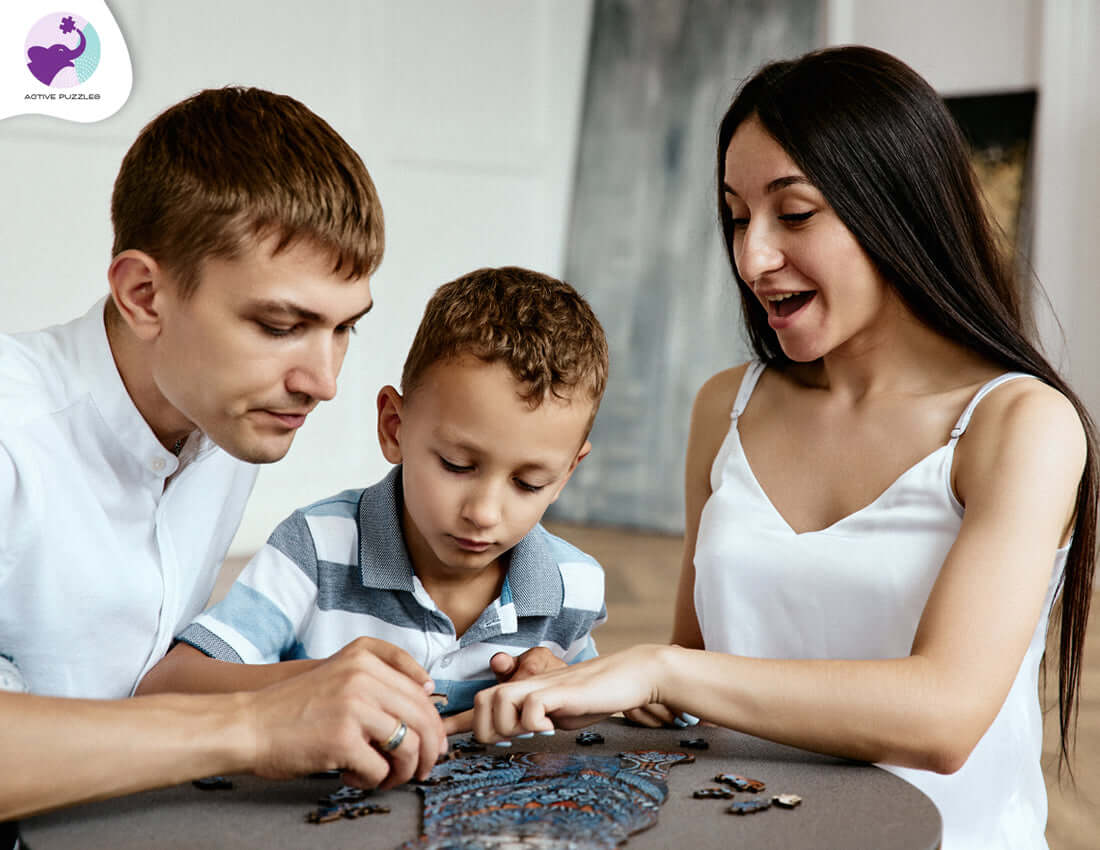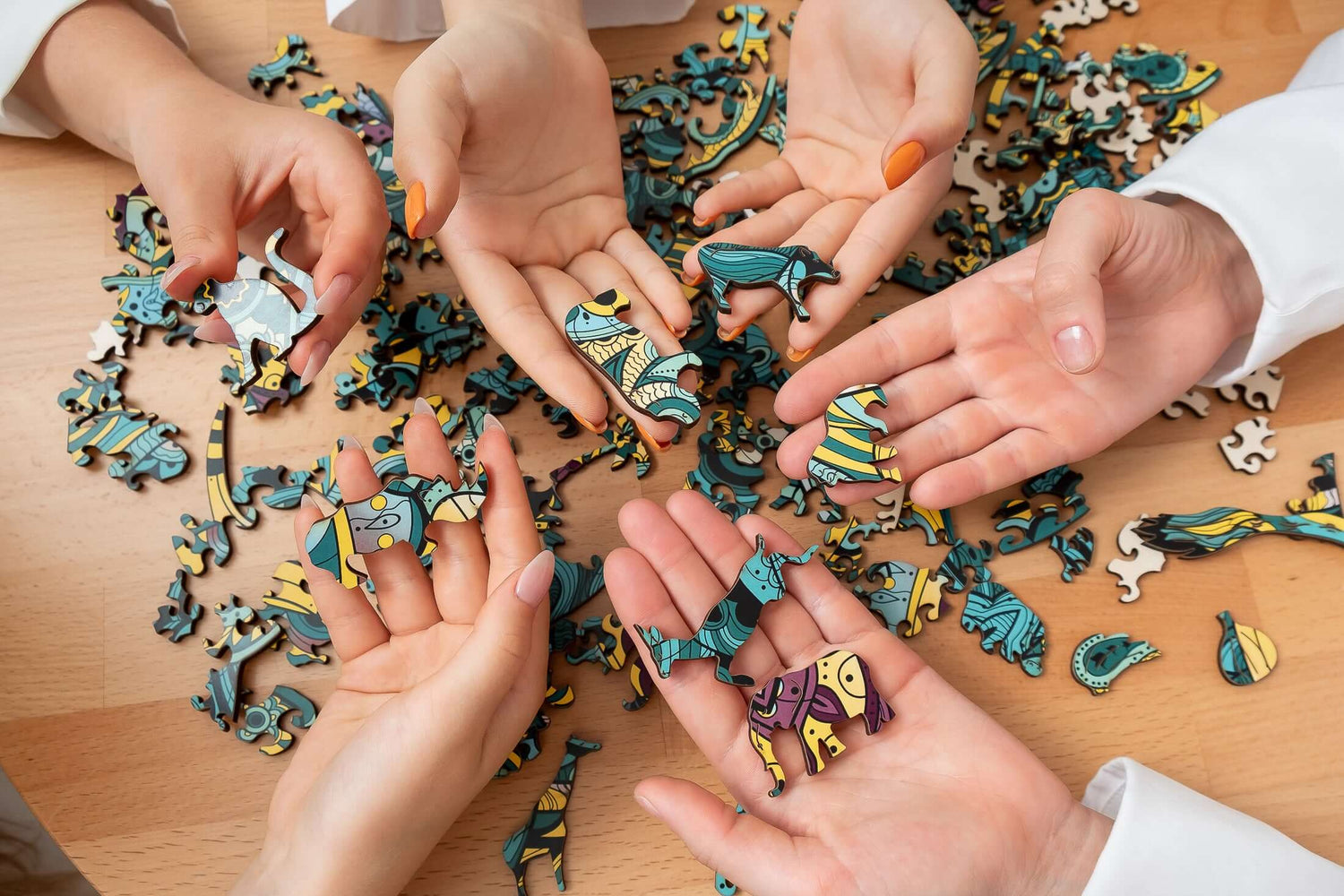
How To Get Kids To Love Puzzles
Share
Puzzles not only help with hand-eye coordination but may also teach you new concepts. Toys that are also educational, such as puzzles, are wonderful gifts for young children. They help a person enhance not just their ability to solve problems but also their memory, patience, and a whole host of other qualities.
Children may gain in various ways from working on puzzles, but to realize those benefits to their greatest potential, they need to be trained. So how can you engage your kids in puzzles? In order to assist your kids to love puzzles in developing an interest in solving puzzles by following these tips.
-
Give challenges from an early age
Younger children may be better at solving puzzles; the sooner they start, the better off they will be. Children as young as six months old might be given their first experience with simple knob puzzles. Children as young as two years old may be given toy jigsaw puzzles that include large pieces and a frame.
-
Change to harder puzzles as needed
Changing the difficulty of a task as a youngster gains experience is important for puzzle-solving. In general, you should consider raising the difficulty level of the puzzles if you see that your child is doing them with little to no thought or effort with the best quality puzzles.
Mostly, this entails more or smaller pieces. It may also involve purchasing puzzles with colours that contrast less strongly with one another, the transition from frame puzzles to floor puzzles, or the importation of puzzles with unique forms or parts that are not uniform in size.
-
A Shape Sorter
Young children need to practice recognizing and fitting a variety of forms before they can solve jigsaw puzzles effectively. This is a necessary skill for puzzles. Experiences that kids can do with their own two hands are essential for the child's intellectual development.
Even if kids cannot arrange the shapes precisely, they still like working with large three-dimensional structures. Using this more complicated form sorter, one may improve their fine motor abilities and eye-hand coordination.
-
Puzzles in the form of geometric shapes
Shape puzzles are three-dimensional form sorters that also incorporate flat forms. The same may be said for those enormous foam puzzle mats many young children keep in their bedrooms.
In addition to being of a size that allows kids to have a wonderful tactile learning experience, these toys often have letters or numbers that can be removed and rearranged in various forms.
-
Puzzles using Pegs
It is easier for kids to operate wooden puzzle pieces since each has a knob or peg. These shapes, whether traditional shapes or animal representations, help kids distinguish objects by shape. Because of the improvement in their eyesight, kids are better able to recognize abstract shapes. There is still space available for these pieces on the baseboard.
Kids may learn to put things together using their vision and sense of touch by first looking at the shape and picture and then feeling whether or not the component fits securely in its location. Learning happens more effectively when a child engages all of his senses at once.
-
Playing with Jigsaw Puzzles
The fact that the pieces of a jigsaw puzzle have to be assembled in such a way as to create a whole image makes it a more challenging activity than a shape puzzle. The base of the puzzle should still be made of hardwood, but for younger children, the individual pieces shouldn't have their borders.
The outline encompasses the whole picture, consisting of several different portions. Start your kid out with puzzles like these that are easy and progressively increase the level of complexity as they gain confidence.
In the beginning, this is often accomplished through trial and error until the child develops greater self-confidence in their ability to see the pieces and match them more properly. This standard jigsaw puzzle demands visual understanding. Adults may enjoy jigsaw puzzles with 2 to 5,000 pieces with best quality puzzles.
-
Make a Group Effort to Put the Puzzle Together
Working with their parents may be very motivating for some children. If the child feels that they have the help of others in completing the problem, they will experience an increase in motivation to do so. In addition, it is easy for your family to strengthen their relationship with one another and spend more quality time together and this will encourage kids to love puzzles.
-
Run a puzzle race to see who's faster
Children like engaging in competition challenges because they allow them to showcase their skills, making this kind of activity popular leisurely for kids. You may use this to your advantage as a parent to motivate your child to put in more effort and increase their ability to construct puzzles by taking advantage of the situation.
It would be sufficient to have a competition among your family members to see who can complete a problem in the shortest amount of time. If you have more than one kid competing against each other, using this technique might provide you with several benefits.
Conclusion
Puzzles are a terrific technique to encourage children of any age to solve problems. Having a lot of puzzles on hand and spending time with your child while they solve them helps promote problem-solving skills and encourage kids to love puzzles.
Think about devoting a whole room in your house to the task of solving puzzles. Keeping board puzzles, pencils, puzzle books, and printable in one place might help a youngster develop an interest in puzzles and reduce screen use.
